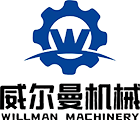It is clear that filling and seaming machines have evolved significantly over the years, with advancements in technology leading to more efficient, flexible, and automated solutions for various industries. The evidence provided spans from early 1990s to 2021, indicating a continuous development and improvement in the field of canning and packaging machinery.
The integration of machine vision for supervisory control in can seaming has been highlighted as a way to ensure quality control by detecting defects in metal cans . This approach underscores the importance of precision and reliability in the manufacturing process, especially in sectors like fish processing where product quality is paramount.
In the context of can filling, flexible automation techniques have been explored to improve performance and efficiency in the salmon canning line . This suggests that advancements in design concepts, such as elliptical and rotary designs, can lead to significant improvements in canning operations.
The invention of a can type drying agent filling machine demonstrates innovation in filling mechanisms, utilizing centrifugal forces to ensure accurate and efficient filling . Similarly, the development of a can filling device that facilitates rapid filling of solid particles with a simple structure further illustrates the ongoing efforts to enhance can filling efficiency and reduce labor intensity
. The implementation of an Automatic Can Machine using PLC control for batch operations in liquid-shaped products like paint or drinks showcases the potential for automation to streamline production processes and monitor system flow efficiently . This is complemented by the method for filling liquid products into cans, which emphasizes effective cleaning of container interiors to maintain hygiene and safety .
The sauce filling can sealing machine exemplifies the integration of filling and sealing functions within a single machine, highlighting the convenience and efficiency gains from such integrated solutions . Moreover, the washing and filling system for beverage cans represents a significant advancement in ensuring sanitation standards are met while increasing work efficiency .
The machine capable of integrating functions of filling and can sealing addresses the challenge of filling mixed-type liquid drinks containing particles, showcasing the potential for simplified structures and improved usage effects. Additionally, the development of an automated adjustable-can foil sealing machine addresses the need for efficient and cost-effective solutions for sealing canned products, especially in small scale industries .
The semi-automatic can seamer introduced in 1995 and the method for filling bottles, cans, or similar containers with a liquid product further illustrate the diversity of approaches being taken to improve filling and sealing processes.
In conclusion, the evidence strongly supports the capability of filling and seaming machines to adapt and evolve with technological advancements. These machines have become increasingly sophisticated, capable of handling a wide range of products with high precision and efficiency. The focus on automation, integration of functions, and improvement in sanitation and safety measures indicates a trend towards more efficient, flexible, and user-friendly solutions in the packaging industry.
Post time: Apr-12-2024



